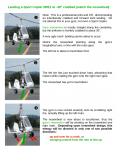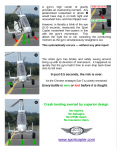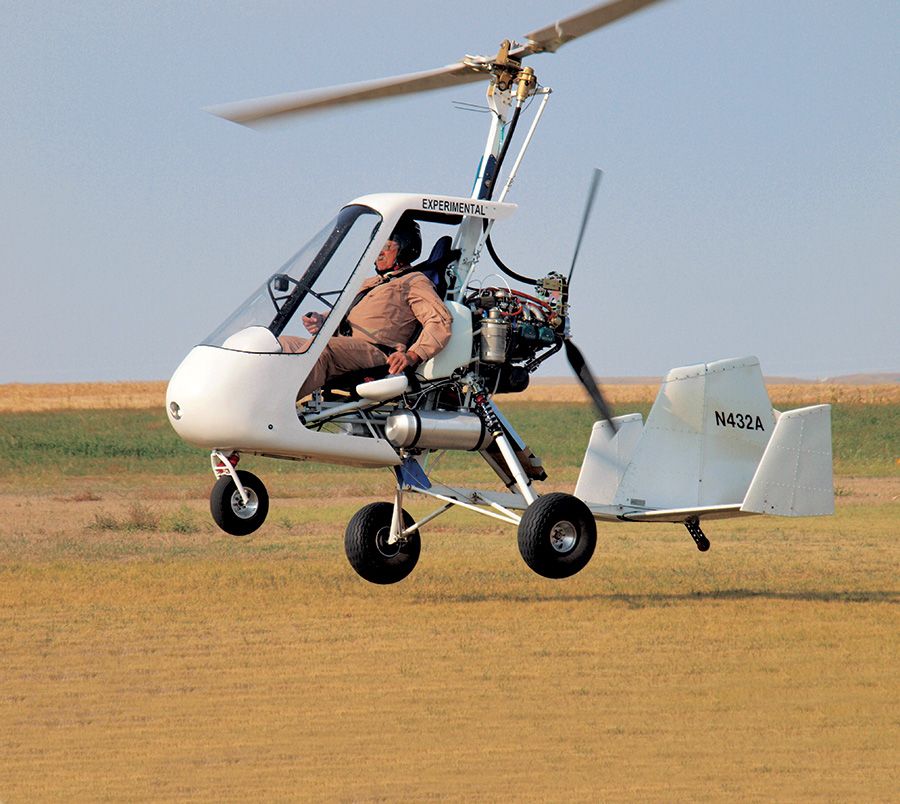Aviator168
Member
What would you prefer? Stirrable nose wheel or differential brakes? I like the latter. Feel that it is a bit easier to control.
As Vance explains... If it is a hard coupled steerable nose wheel then you should always do a soft-field landing and takeoff.
Always use soft-field procedures with cross-winds and the only consideration left for differential braking is the diameter of the turn needed.
Yaw Mon, we agree completely. As a Piper dealer with many leased back makes and models I had little time in but often had to ferry. I was taught to do that with all hard-linked FW aircraft and you will never have a problem.I do not recommend always doing a soft field landing with a steerable nose wheel.
...
I do recommend keeping the nose in the air until the gyroplane is stopped and staying light on the pedals in all landings with linked nose wheel steering.


I think you must mean the clutch release button, not the take-off button. It's a dumb thing to do, but if you do it, lacking a tail rotor, it will turn sharply right from the prerotation torque if you start to roll but have not already de-clutched. If it happens, you de-clutch and straighten out again before proceeding.Howdy WaspAir, tell them what happens in the 18A if you have the prerotator fully engaged, brakes held, and accidentally let the aircraft "creep" forward a little before that take-off button is pushed, when planning a short rolling takeoff. Surprise.!!
I can land anything just keep the nose wheel off the ground until lift will no longer hold it up, and you are stopped normally, but this is the design I prefer in all A/C types. It can even fix stupid human tricks most of the time.The Sport Copter M2 will benefit from our 30 years development of rugged suspension and safe trailing-link fully castering nosewheel.
Thus, only 17.2% of Sport Copter incidents have occurred during takeoffs and non-emergency landings.
For a leading competitor, their incident rate occurring during takeoffs and non-emergency landings has so far been 3x greater at 51%.
Here are still frames from a recent test Jim Vanek performed in our Vortex M912, intentionally landing at a severe crabbed angle.
View attachment 1146950
View attachment 1146951
...then punch the take-off button...
Actually, it is far easier than most of the stuff others fly, because there is absolutely no rotor management to worry about, no possibility of a "flap", no balancing on the mains, or any of that stuff. It's a sequence of simple steps to do by the numbers (not by feel) requiring surprisingly little skill, but I agree that it is a blast to fly.Woo-hoo! That sounds like a challenge to master and a blast to fly.

 www.kitplanes.com
www.kitplanes.com
We agree, thanks, Doug.The risk if you hold the nosewheel off as long as possible (to avoid a swerve caused by a hard link) is that a cross-gust can flip you more easily with the rotor tilted far aft. Been there!
It's much safer in gusty or crosswind conditions to "kill" the rotor with full forward stick as soon as you touch down.
Differential braking takes a bit of getting used to, but it's worth it, IMHO. A free-castering nosewheel is the safest setup.
This sounds like the pilot is treating the gyro like a fixwing aircraft.However, a fairly common accident scenario in other gyros is that the pilot forgets to move the prerotated flat disk back before commencing the take-off roll, rapidly achieves high ground speed without liftoff, and then incorrectly tries to rotate with aft stick (of a now decayed RRPM disk).
